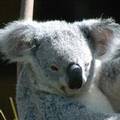 聯合國1月1日表示,由於人類活動,專家指出全球動植物物種消失的速度,是自然演替的1000倍。同時聯合國也宣布2010年為「國際生物多樣性年」,以彰顯地球上生命的千姿百態。
聯合國1月1日表示,由於人類活動,專家指出全球動植物物種消失的速度,是自然演替的1000倍。同時聯合國也宣布2010年為「國際生物多樣性年」,以彰顯地球上生命的千姿百態。
國際生物多樣性年的目的,旨在提升人們的相關意識,包括生物多樣性的重要性、及多樣性消失對人類福祉造成的影響。1月11日將在柏林正式啟動「國際生物多樣性年」。
根據世界自然保護聯盟(IUCN) 一項新的研究報告提到,10種很可能受氣候變遷嚴重影響的物種。這十種最脆弱的物種為:北極狐、革龜、無尾熊、白鯨、小丑魚、皇帝企鵝,箭筒樹、環斑海豹、鮭魚和鹿角珊瑚。
這份名為「物種和氣候變遷」的報告顯示,氣候變遷不利於海洋、陸地和淡水棲地。
此報告指出,由於暖化,極地物種正受到海冰減少的影響。環斑海豹正是例子之一,由於牠需要依靠海冰撫養幼海豹,不得不被迫朝更北部遷徙。
「環斑海豹數量大減可能對北極食物網有連鎖效應。他們是北極熊最重要的飲食。」
北極狐所賴以為生的北極苔原,因暖化造成新的植物蓬勃茂盛,而逐漸消失。由於棲地逐漸從苔原變成森林,獵捕北極狐並與之競爭食物的赤狐,可進一步向北遷徙,從而縮小了北極狐的領域。
北極的白鯨也受到全球暖化直接和間接的負面影響。直接的影響是由於海冰流失因而難以找到獵物;間接影響是由於冰融,而使人類進入過去無法接近的區域,進行各種活動。船隻碰撞、污染、天然氣及石油勘探都對白鯨造成更大的風險。
適應嚴酷南極的皇帝企鵝,也和北極區生物一樣,面臨著同樣的問題。皇帝企鵝進行交配、撫育幼雛和換羽所需的海冰區域正在縮減。覆冰率減少也意味著磷蝦數量更少,影響了皇帝企鵝和其他許多南極物種的食物供應。
氣候變遷的影響不僅限於極地區。在熱帶地區,包括大約 160種的鹿角珊瑚,因海溫上升受到嚴重影響,也就是珊瑚白化。肇因於海洋中二氧化碳濃度過高的海洋酸化,也使珊瑚骨骼更為脆弱。
小丑魚,也是海洋酸化受害者。酸性水質擾亂其嗅覺,削弱他們找到特定海葵宿主的能力。鮭魚同樣也受到衝擊。水溫上升減少水中含氧量,增加了魚群的患病率,並破壞其繁殖能力。
由於氣候變遷,革龜正受到海平面上升和颶風活動增加的影響,破壞了其產卵棲地。
這份報告顯示,澳洲動物明星—無尾熊面臨著營養不良和飢餓。大氣中二氧化碳增加將減少桉樹葉的營養品質,使食用這種樹種的物種營養不足。因此,無尾熊可能無法獲得足夠的營養。
二氧化碳的增加也直接威脅其他植物。因為乾旱,非洲赤道附近的箭筒樹族群正逐漸消失。
Due to human activities, the world's animal and plant species are disappearing at a rate some experts put at 1,000 times the natural progression, the United Nations said January 1, marking 2010 as the International Year of Biodiversity - the variety of life on Earth.
The purpose of the International Year is to raise public awareness of the importance of biodiversity and the consequences of its loss to human well-being.
The Year's official launch will take place in Berlin on January 11.
Ten species likely to be hardest hit by climate change are profiled in a new research report from the International Union for the Conservation of Nature, IUCN.
The Arctic fox, leatherback turtle and koala are among these most vulnerable species and so are the beluga whale, clownfish, emperor penguin, quiver tree, ringed seal, salmon and staghorn corals.
The report, "Species and Climate Change," shows how climate change is adversely affecting marine, terrestrial and freshwater habitats.
Polar species are being affected by loss of ice due to global warming, according to the report. An Arctic species, the ringed seal is being forced further north as the sea ice it relies on for pup-rearing retreats.
"Marked decreases in ringed seal abundance are likely to have cascading effects in Arctic food webs. They are the most important species in the diet of polar bears," said Kovacs.
The Arctic tundra on which the Arctic fox depends is disappearing as warming temperatures allow new plant species to flourish. As the habitat changes from tundra to forest, the red fox, which preys on the Arctic fox and competes with it for food, is able to move further north, reducing the Arctic fox's territory.
The Arctic's beluga whale is likely to be affected by global warming both directly, through loss of sea ice and resulting difficulty finding prey, and indirectly, through human activity as melting sea ice opens up previously inaccessible areas. Ship strikes, pollution and gas and oil exploration all put this marine mammal at greater risk.
The emperor penguin, adapted to unforgiving Antarctic conditions, faces a similar problem. Regional sea ice, which it needs for mating, chick-rearing and moulting, is declining.
Reduced ice cover also means less krill, affecting food availability for the emperor penguin and many other Antarctic species.
The impacts of climate change are not limited to the polar regions. In more tropical areas, staghorn corals, which include some 160 species, are severely affected by rising ocean temperatures, which causes coral bleaching. Ocean acidification, the result of too much CO2 in the oceans, weakens the corals' skeletons.
Clownfish are also victims of ocean acidification. Acidic water disrupts their sense of smell, impairing their ability to find their specific host anemone, which they rely on for protection. Salmon are threatened by increases in water temperature, which reduces water's oxygen levels, increases their susceptibility to disease and disrupts their breeding efforts.
The leatherback turtle is being affected by rising sea levels and increased storm activity due to climate change which destroys its nesting habitats.
Australia's iconic koala faces malnutrition and ultimate starvation, the IUCN report shows. Increasing atmospheric CO2 levels will reduce the nutritional quality of eucalyptus leaves, causing nutrient shortages in the species that eat them. As a result, koalas may no longer be able to meet their nutritional needs.
An increase in CO2 levels directly threatens other plants. The quiver tree is losing populations in the equator-ward parts of its distribution range due to drought stress.
全文及圖片詳見:ENS







